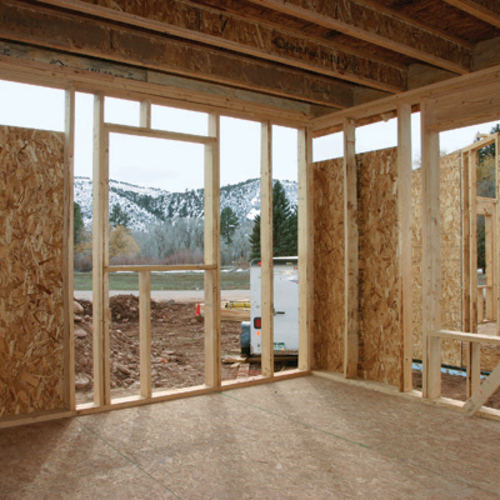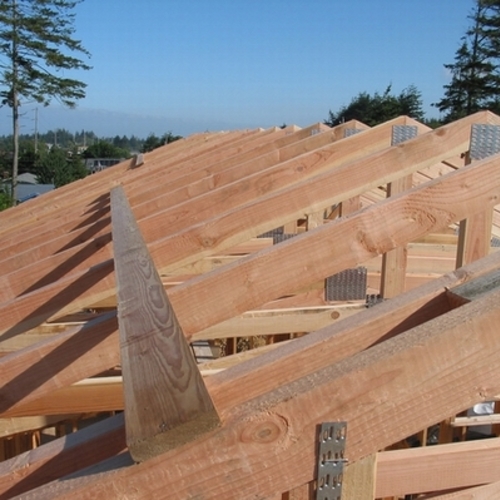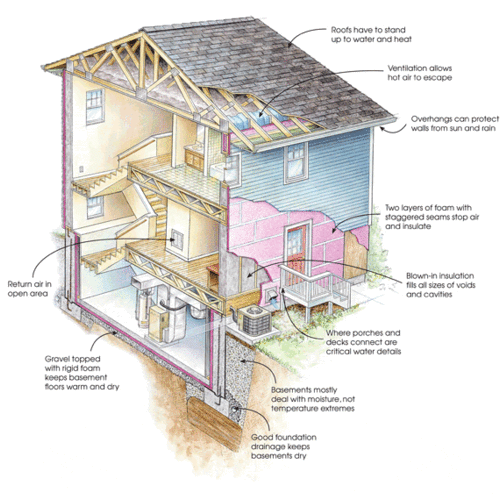ABOUT SIPs
A well-established building system
SIPs have a long history in the U.S. housing industry. Early versions were developed in the mid ’30s at the Forest Products Laboratory, and the first foam-core panel was produced more than a half century ago. SIPs have never quite broken into the housing mainstream, but they offer a number of advantages over conventional stick framing.
SIP construction is more expensive than standard frame construction, but because the resulting building envelope is tighter and insulation values potentially higher, using them may make it possible to downsize heating and cooling equipment. Lower operating costs over the life of the building should mean a net gain over conventional construction.

This article is only available to GBA Prime Members
Sign up for a free trial and get instant access to this article as well as GBA’s complete library of premium articles and construction details.
Start Free TrialAlready a member? Log in










9 Comments
Single Manufacturer?
Murus also manufactures XPS panels contrary to what Foard panel claims.
Response to Adam Stoddard
Adam,
Thanks for the information. I have updated the article to include Murus.
Has anyone used Agriboard?
I'm interested in this product, but always wary of a one-supplier material.
Response to Ethan T
Ethan,
Like you, I'm interested in hearing from any GBA readers who have used Agriboard.
In general, it only makes sense to use SIPs if your building site is located near a SIP factory. The farther away from the SIP factory you are located, the less SIPs make sense (because trucking costs add up, and the fuel used for trucking undermines the environmental advantages that you are probably seeking).
-- Martin Holladay
We are using SIPS to build the walls and roof of our tiny home on a trailer. Rough Dimensions are 33' 8" long by 8' 6" wide, and 12' tall from the deck of the trailer (14' from ground level). About 225 sq. feet for the floor level, plus two lofts (one at either end) for a another 150 sq feet of usable space. We used the tiny house trailer and a Chevy 2500 pickup to transport the SIPS panels 534 miles ourselves, at a fuel cost of about $300. We had the panels pre-cut to our design, but are installing all of the dimensional lumber, splines and window framing ourselves to reduce initial cost and transport weight. Our total cost for the Panels was about $13,500. So far, things are going well, and we are putting the roof panels on this weekend. Not so expensive, compared to insulation, stick framing and sheathing, air barriers, etc. SIPS adhesive for all joints, SIPS tape for all joints (we are sealing the interior for our climate on the north coast), all screws for corner and roof panel attachment and a hot foam cutter were included.
I would also like to hear from others that have used Agriboard
“[Deleted]”
R-Control out of Montana uses steam to expand their foam core - no HFCs or CFCs. Great to work with so far.
EPS, including R-control, and GPS are always blown with water/steam. But the raw material, styrene beads, is created with a pentane-based blowing agent. It's relatively benign and mostly recaptured at the factory.
Log in or become a member to post a comment.
Sign up Log in